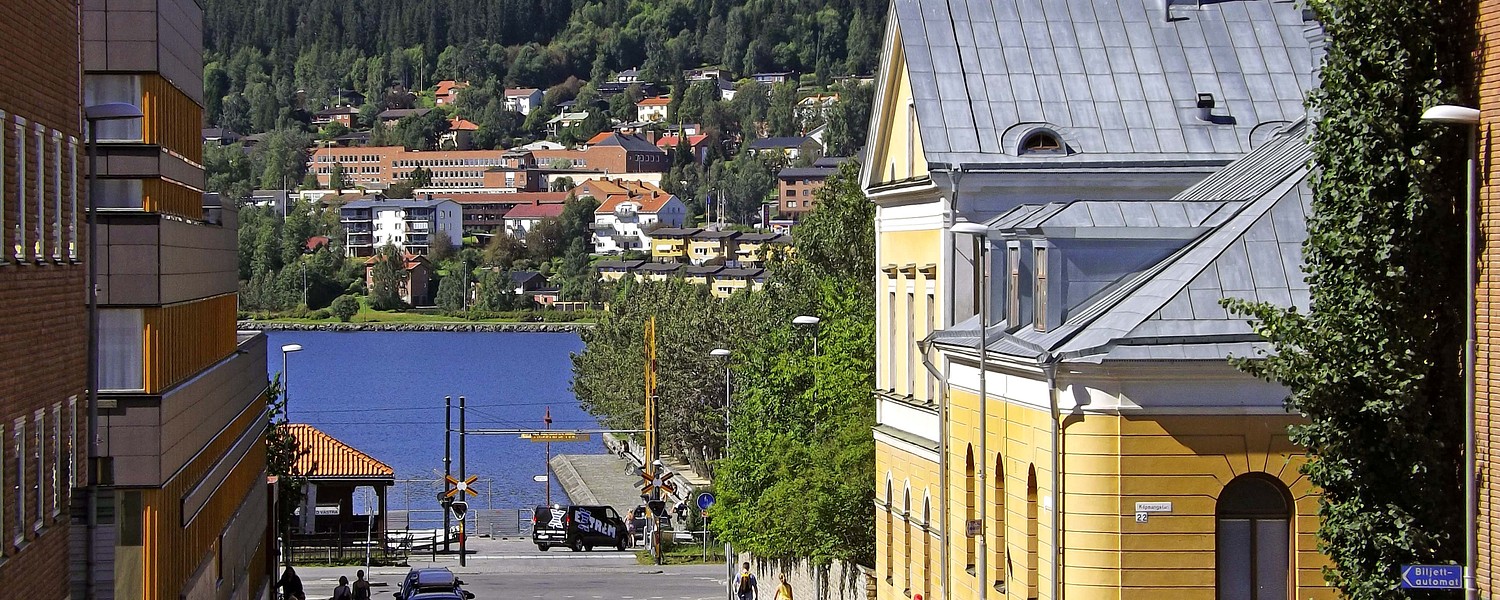
Provided by:
Mr Thinktank/cc by-2.0/Flickr

Our travel guides are free to read and explore online. If you want to get your own copy, the full travel guide for this destination is available to you offline* to bring along anywhere or print for your trip.
*this will be downloaded as a PDF.Price
€4,95
The City
The guide was updated:
Östersund’s central location, almost at the very centre of Sweden, gives the city proximity to both coastal landscape and mountains. The popular ski destination, Åre, is only an hour away by train, and to Stockholm, it takes about 50 minutes by air (or 5 hours by train).
During the summertime, the city streets are lined by outdoor cafés and people of all ages — from near and far — socialising and making Östersund into a lively city. Storsjöyran, the annual festival, is one of the summer’s highlights.
During the dark winter season, besides the possibility of outdoor activities and the white snow, there are theatre performances, concerts, the troubadours, and, of course, the chance to see the amazing northern lights dancing in the sky.
The city of Östersund was founded in 1786 and was at the beginning a typical settlers community where lawlessness is said to have been widespread. Illegal bars were common and the streets were pitch black after nightfall. As late as 1876, the first kerosene lamp appeared on the street. By the middle of the 19th century, trade and craft slowly increased and by the beginning of the 20th century, several stately buildings had been erected as a sign of the increasing prosperity. 50 years later, Östersund was a military city with thriving industries.
Today, Östersund is one of the most pleasant Northern, medium-sized Swedish cities. Lots of small shops line the main thoroughfares through the city centre and the "outdoor factor" is remarkably strong — given that the ski resort of Åre is not far away. In proportion to its population, the city is also one of the most cafés- and restaurant-dense cities in Sweden, so you will, definitely, get the opportunity to enjoy a good cup of coffee.
Blue, white, and green — the colours of Jämtland's flag testifies Östersund’s surroundings — the distant blue, mountains, the snowy winter landscape, and the green forests. The wilderness is always close and the area around Östersund offers endless opportunities for exciting day outs not only for those who want to find peace but also for those looking for an adventure.
The island of Frösön has been a gathering place for humans for thousands of years and today, it offers little of everything found in the rest of Jämtland.
The county of Jämtland covers 12 per cent of Sweden’s surface, but only 1.5 per cent of Sweden’s population lives here. This creates large imaginary gaps in civilisation, guaranteeing some of Scandinavia’s most magnificent nature.
The Sami culture has left its mark on the region and around 44,500 reindeer belonging to 11 Lapp villages, wander the land. And, with some luck, you might also spot moose, bear, wolverine, wolf, lynx, arctic fox, and musk ox.
During the summertime, the city streets are lined by outdoor cafés and people of all ages — from near and far — socialising and making Östersund into a lively city. Storsjöyran, the annual festival, is one of the summer’s highlights.
During the dark winter season, besides the possibility of outdoor activities and the white snow, there are theatre performances, concerts, the troubadours, and, of course, the chance to see the amazing northern lights dancing in the sky.
The city of Östersund was founded in 1786 and was at the beginning a typical settlers community where lawlessness is said to have been widespread. Illegal bars were common and the streets were pitch black after nightfall. As late as 1876, the first kerosene lamp appeared on the street. By the middle of the 19th century, trade and craft slowly increased and by the beginning of the 20th century, several stately buildings had been erected as a sign of the increasing prosperity. 50 years later, Östersund was a military city with thriving industries.
Today, Östersund is one of the most pleasant Northern, medium-sized Swedish cities. Lots of small shops line the main thoroughfares through the city centre and the "outdoor factor" is remarkably strong — given that the ski resort of Åre is not far away. In proportion to its population, the city is also one of the most cafés- and restaurant-dense cities in Sweden, so you will, definitely, get the opportunity to enjoy a good cup of coffee.
Blue, white, and green — the colours of Jämtland's flag testifies Östersund’s surroundings — the distant blue, mountains, the snowy winter landscape, and the green forests. The wilderness is always close and the area around Östersund offers endless opportunities for exciting day outs not only for those who want to find peace but also for those looking for an adventure.
The island of Frösön has been a gathering place for humans for thousands of years and today, it offers little of everything found in the rest of Jämtland.
The county of Jämtland covers 12 per cent of Sweden’s surface, but only 1.5 per cent of Sweden’s population lives here. This creates large imaginary gaps in civilisation, guaranteeing some of Scandinavia’s most magnificent nature.
The Sami culture has left its mark on the region and around 44,500 reindeer belonging to 11 Lapp villages, wander the land. And, with some luck, you might also spot moose, bear, wolverine, wolf, lynx, arctic fox, and musk ox.


